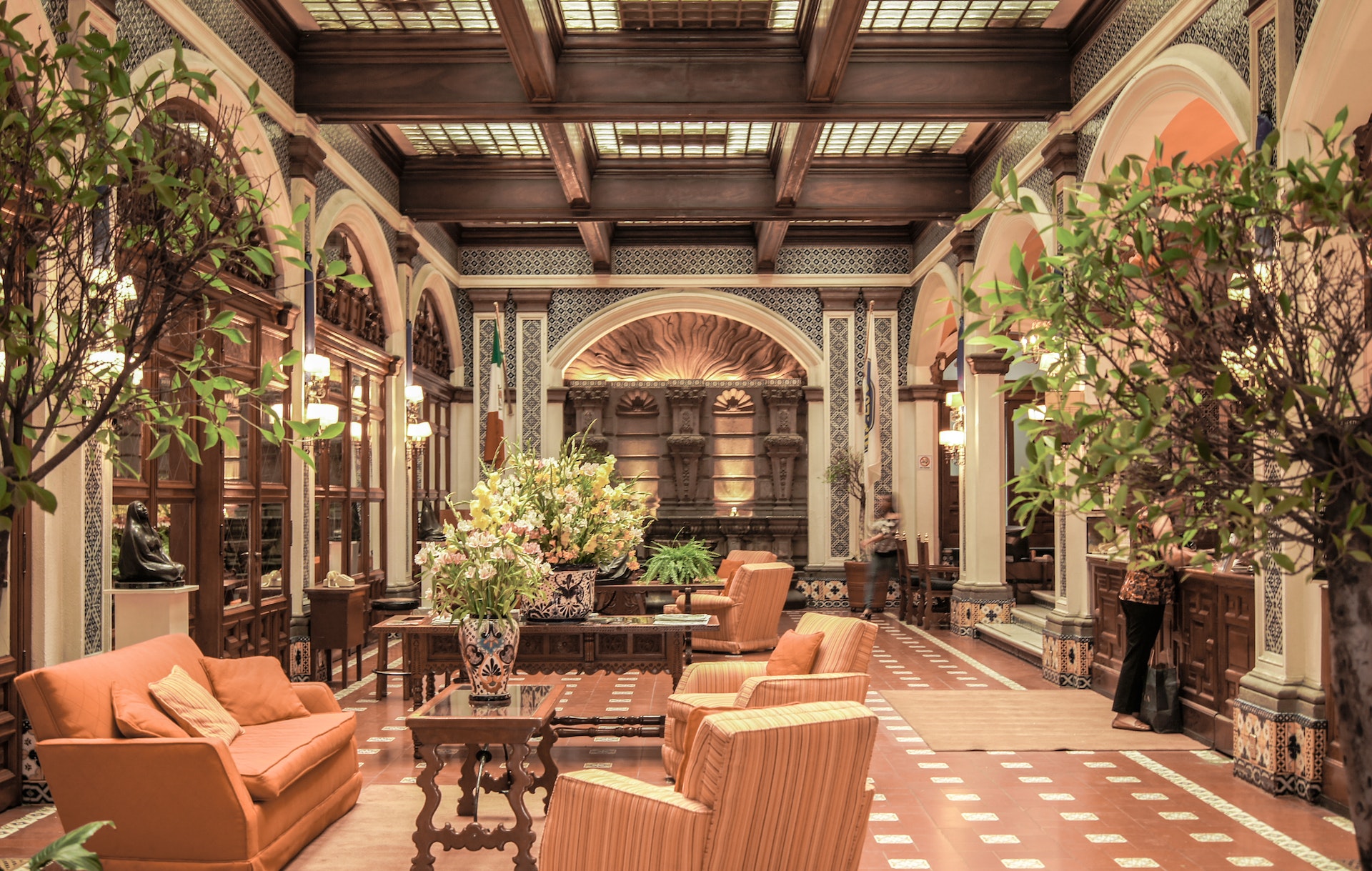Urban food outlets in the U.S., as elsewhere, began to cater more to locals than to passersby, who now had to make do with roadside taverns. The tradition of dining out was born, not out of necessity, but for pleasure.
By 1852, every first-class hotel in the United States had a French chef. Although in their hearts Americans disapproved of “fancy” French cuisine, as regulars in these restaurants they would never admit it.
Parallel to this was the formation of the American form of service itself. Cafeterias, as they have today, opened in Chicago in 1891. The principle of the cafeteria was born in California during the Gold Rush era, when gold prospectors, who could not wait to go back to the mine, preferred to stand in a long line to the distribution, to get a portion from the common pot, rather than wait at a table while they are served.
In 1876 the first railroad station restaurant (Topeka, Kansas) appeared, distinguished from all such restaurants by good food, clean tablecloths, and courteous service.
By the end of the nineteenth century fruit soda with ice cream was invented, and so-called ice cream cafes began to open all over America, the stands of which were decorated with large marble boxes with a soda machine.
Another achievement of this century was that women began to dine in upscale restaurants.
In the twentieth century, the U.S. catering industry continued to grow rapidly. This process could not be hindered by Prohibition Law (1919-1931), which forced the cafes to switch to the underground trade of alcohol, or World War II with its rigid system of food distribution. The latter gave impetus to the development and use of vending machines. The fifth generation is currently in operation.
In the 190s a lot of drive-in places opened on American roads, and motorists called it “hopping”: when a waiter approaches the car to take an order, an impatient driver jumps on the step of his car. Drive-ins became an integral part of the American way of life and one of the favorite places to socialize.
The postwar period was marked by the emergence of new trends in U.S. catering with the proliferation of frozen foods. They began to be used in restaurants, factory canteens and cafes, as well as on airlines.
In 1959 the first elegant restaurant in America that did not imitate the French model, the Four Seasons, opened. It absorbed all the previous experience in the restaurant business, and everything in it, from the simple space to the table accessories, created a sense of harmony. The restaurant differed from others with its seasonal menu (its name says it all), modern architecture and an interior that embodied the theme of art. The attitude was as follows: the restaurant must satisfy the need for pleasures.
A smart restaurateur must be able to adapt quite quickly to changing market conditions. So during the downturn in business in the 1930s, the famous Delmonico’s specialized in making breakfasts. Then it began delivering cooked breakfasts and lunches to Wall Street, and when the firms had some evening events, they delivered dinners. Then Delmonico organized the preparation of food suitable for the weekend. He didn’t skimp on wedding events either.
The 1970s passed entirely under the sign of quick service businesses. The additional technical possibilities that opened up allowed them to greatly expand their food offerings. In addition to burgers and fried chicken, they introduced Mexican and European cuisine, particularly pizza and seafood. By this time the U.S. catering industry, considered by many experts to be the most developed in the world, had taken shape in its main features.
Mc’ Donald’s trademark “Golden Arch” is often perceived as a symbol of the American economy. The formula for success is simple: quality, efficiency, cleanliness. All this has been achieved through automation of the process and fidelity to the concept based on the limitation of a well thought-out menu, strict adherence to quality standards and a powerful advertising campaign.

